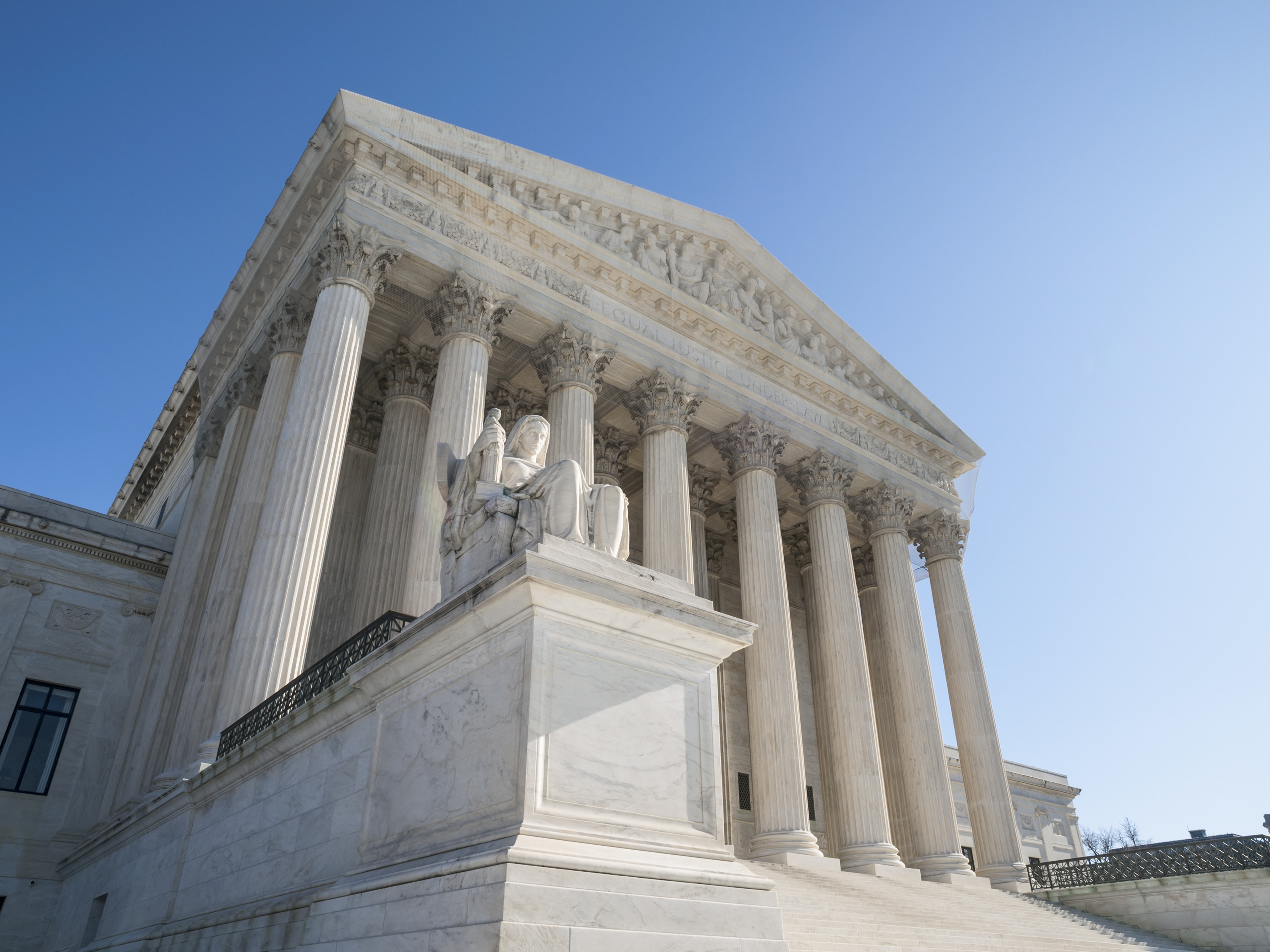
We begin our story in 1969 with a man named Warren Burger, who besides being one of the most influential and brilliant jurists of his time was also a gifted interior designer.
Upon his appointment as chief justice of the United States, Burger embarked on a tour of the court not unlike a buyer on an HGTV house hunting show.
"Beginning in his own small office Burger remarked that it was smaller than his old one at the Court of Appeals," Bob Woodward and Scott Armstrong wrote in "The Brethren: Inside the Supreme Court."
Surely, that would not do.
In fact, the entire place needed an Extreme Court Makeover. The walls needed a paint job. The lighting was tragic. "A few plants would bring to life the barren, gloomy halls," Woodward and Armstrong wrote.
So far, these weren't dealbreakers. It's not like Burger had a teardown on his hands.
But when he got to the courtroom itself - uh oh. Woodward and Armstrong described one issue:
"Burger pointed to the Justices' nine high-backed black leather chairs. Each Justice chose his own, and the sizes and styles varied. Some were nearly a foot taller than others. Douglas's was tufted, the others were smooth. It looked unseemly, disorderly, Burger said. In the future only one kind of chair would be available."
While important, that wasn't the inspired observation that gave rise to telling this story.
This was: The bench upon which the most powerful jurists in the world sat was positioned straight across, like the dais table at a banquet.
As Burger knew from arguing before the court, this meant the justices couldn't hear each other well, and they often didn't know who was talking or about to talk.
This led to confusion. This led to constant interruptions. This led to rudeness, both real and perceived.
And what Burger did next - it torn up and rebuilt in a wide U-shape - led to the court being forever reshaped, figuratively and argumentatively.
We know this because of a fascinating, quixotic article that appeared recently in the Journal of Supreme Court History titled, "Chief Justice Burger and the Bench: How Physically Changing the Shape of the Court's Bench Reduced Interruptions during Oral Argument."
Some justices hated the change. Justice William Douglas had this opinion: "as useless and unnecessary as a man's sixth Cadillac." But in analyzing oral arguments from 1962 to 1982 - before and after the bench makeover - the study's authors found that interruptions dropped by more than half.
"By making the structural changes he did to the Court's bench, Burger enhanced collegiality among his brethren," the authors wrote. "In short, while this may seem a small act, small acts can, and often do, add up to major changes."
Why would changing the shape of the bench have such a profound impact?
The authors answered that question in a section of their paper titled "A Theory About Visual and Auditory Connections at Oral Argument":
"Scholars have demonstrated that nonverbal communication between and among humans is highly informative and often quickly received. One scholar commented that "the nonverbal channels [of communication] carry more information and are believed more than the verbal band." Humans can often size each other up while glancing at someone in a tenth of a second."
Eye contact is crucial.
"Research tells us that individuals are less likely to interrupt one another when they can see each other," the authors wrote, noting that communication researchers have found that "eye contact from an interactive partner increases cooperative behavior."
Applying academic research to present-day problems is notoriously difficult. But the study's authors, broadly speaking, think they are on to something:
"ollegiality among governing actors is more important today than ever. Collegiality is what allowed President Reagan to work effectively with House Speaker Tip O'Neill in an era of divided government. It is what allowed Chief Justice Rehnquist to lead a Court effectively with Justices as different as Clarence Thomas and John Paul Stevens. Collegiality is critical for any collective body to operate effectively. Yet, leaders must sometimes grease the wheels to enhance collegiality. People cannot simply step into a moving river and expect to divert its direction."
But they can turn off Twitter.


 Contact The Editor
Contact The Editor
 Articles By This Author
Articles By This Author